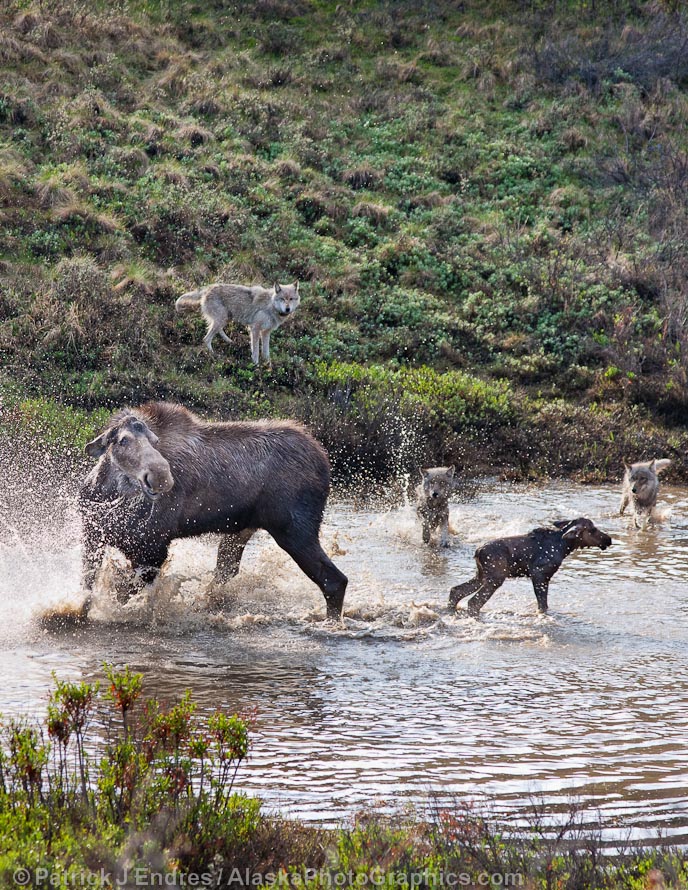
This was a horizontal image cropped to fit the cover of a magazine featuring an article on wildlife management and predator control. A Cow moose defends her newly born calf from the Grant Creek wolf pack in Denali National Park. In the end, the wolves got the baby moose. Canon 1Ds Mark III, 100-400mm f/5.6L IS, (135mm), 1/500 sec @ f/5.6, ISO 800
I recently sold a photo from the most popular series of pictures and subsequent blog post of 2010. The image was chosen for the cover of a small magazine doing an article on the issue of wildlife management and predator control. The subject was the attack of a wolf pack on a moose calf, and the diligent defense of the mother moose. It was an extreme scene to say the least, and although it was very popular on the blog, I do not expect the subject in general to sell much due to its brutal content.
Life as a successful professional nature stock photographer requires the nuanced understanding of the photographic market, along with finding the delicate balance of making a living from the imagery you enjoy shooting. I know my colleagues agree that it is not necessarily the easiest job to undertake, especially in these quickly changing “digital” times, but it is rewarding and filled with opportunities intricately bound with nature itself. To participate in this venue as a form of work is a privilege to me.
To see a scene like the one above is rare, troubling, and awe inspiring. I doubt that I’ll ever see anything like it again, let alone have the chance to document it. What was interesting and equally disturbing to me about people’s response to these images was the wide range of comments they provoked. Disturbing in that it revealed a severe disconnect from nature and the cycle of life and death that occurs daily around us in the natural world. Raw scenes like the one above are often hidden even from those who trek the natural landscape, but all the more from those isolated to an urban-only lifestyle.
There are two books that come to mind when discussing this topic and I recommend both of them.
Ordinary Wolves by Seth Kantner: A novel contextualized in Alaska, addressing the complex issues of land, development, and changes to rural and indigenous culture.
The Last Child in the Woods by Richard Louv: A semi-scholarly discussion about the ways children are becoming increasingly disconnected from nature.
If you are interested you can see the two original posts on the subject here:






